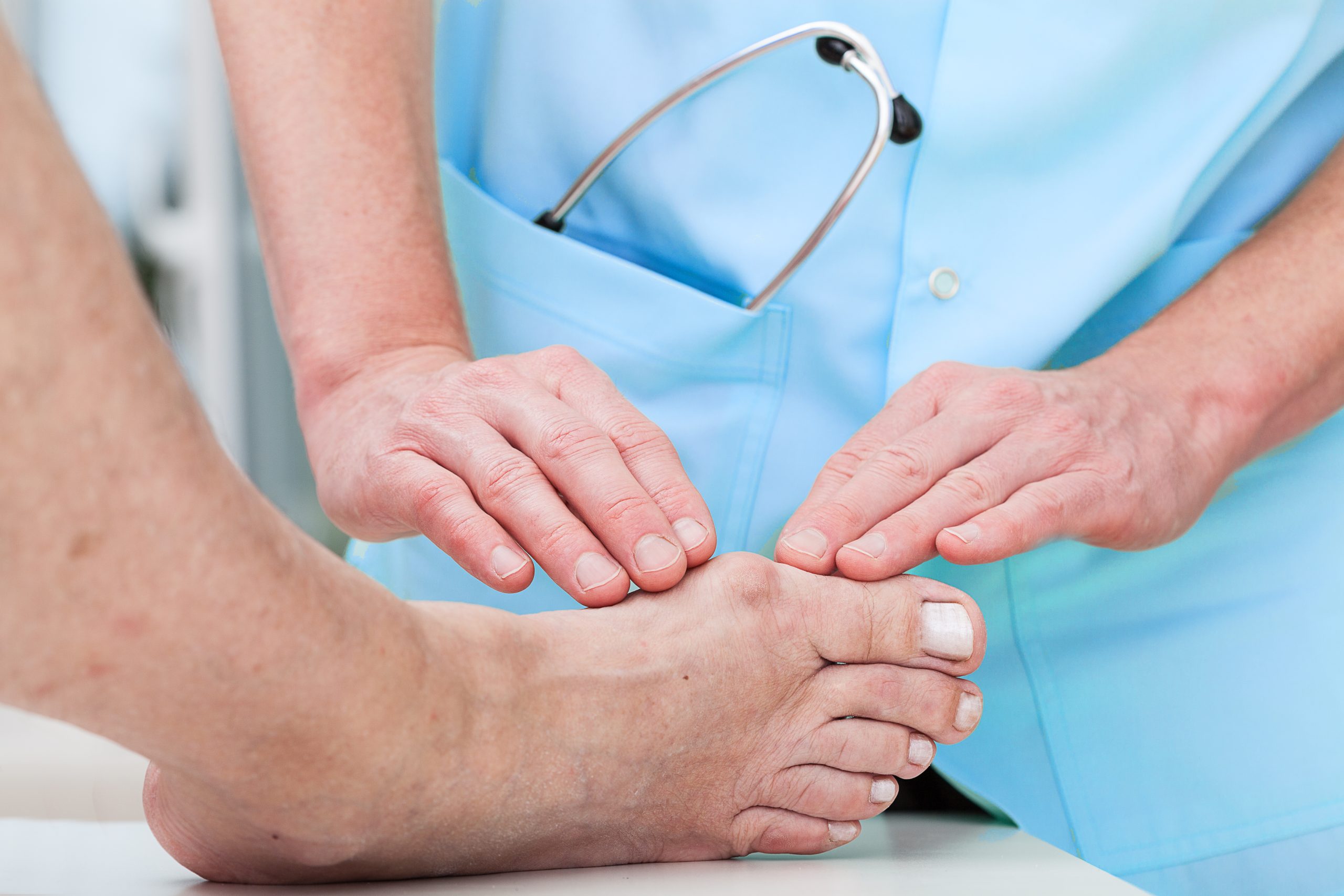Bunions, also known as hallux valgus, are bumps that develop on the joint at the base of the big toe. They develop when the big toe is pushed repeatedly against the toe next to it, often leading to misalignment and joint inflammation, which causes pain and discomfort. Bunions are a common foot issue in Singapore, affecting people of all ages, although they are particularly common among women and the elderly.
Bunions can develop due to multiple factors that cause the big toe to press against the toe next to it, including genetics and wearing improper footwear. They can develop on both feet, known as bilateral bunions. Without treatment, bunions can worsen over time due to the pressure, leading to pain and even mobility issues. In the early stages, treatment may include stretching exercises, orthotics, pain management, and lifestyle changes, which helps to slow down the progression of bunions and reduce pain and discomfort.
However, bunions cannot be fully reversed once they are developed. Therefore, a common solution for severe bunions is bunion surgery, also known as bunionectomy. In most cases, it can be done as a minimally invasive surgery. Keep reading to find out everything you should know about bunion surgery, including costs and benefits.
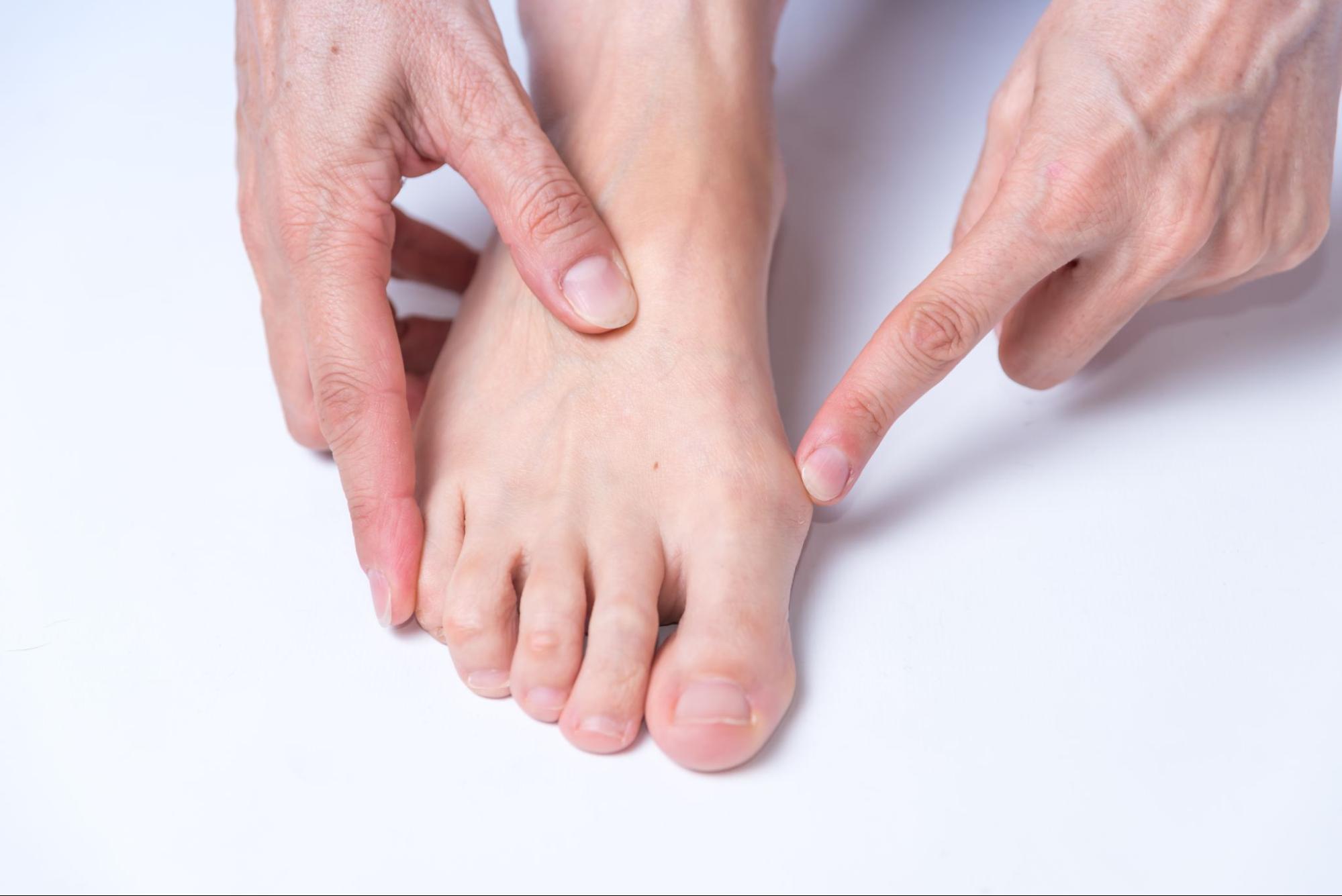
Bunions are painful and swollen bumps that develop on the joint at the base of the big toe.
What Causes Bunions?
Our feet consist of bones, joints, ligaments, and tendons that work together to support our movement. Bunions form when the metatarsophalangeal (MTP) joint [1] of the big toe becomes misaligned. There are a few types [2] of bunions:
- Hallux valgus – The most common type, where the big toe shifts inward toward the other toes, forming a bony bump at the base of the big toe. This usually causes pain, swelling, and difficulty wearing certain shoes.
- Adolescent bunion – Occurs in children and teenagers, usually due to genetic factors. These tend to be less painful but may worsen over time if not managed properly.
- Tailor’s bunion – A bunion that develops on the outside of the foot at the base of the little toe. It also forms due to pressure or improper footwear and is usually just as painful as a standard bunion.
Several factors lead to the development of bunions, including:
- Genetics: Having a family history of bunions may increase your risk of developing them.
- Improper footwear: Wearing footwear that causes the joint of the big toe to become misaligned is a common factor, such as wearing tight, narrow, or high-heeled shoes.
- Structural issues: Foot structural issues such as flat feet and low arches can increase the risk of developing bunions.
- Medical conditions: Some medical conditions such as arthritis and certain neuromuscular disorders may lead to bunion formation.
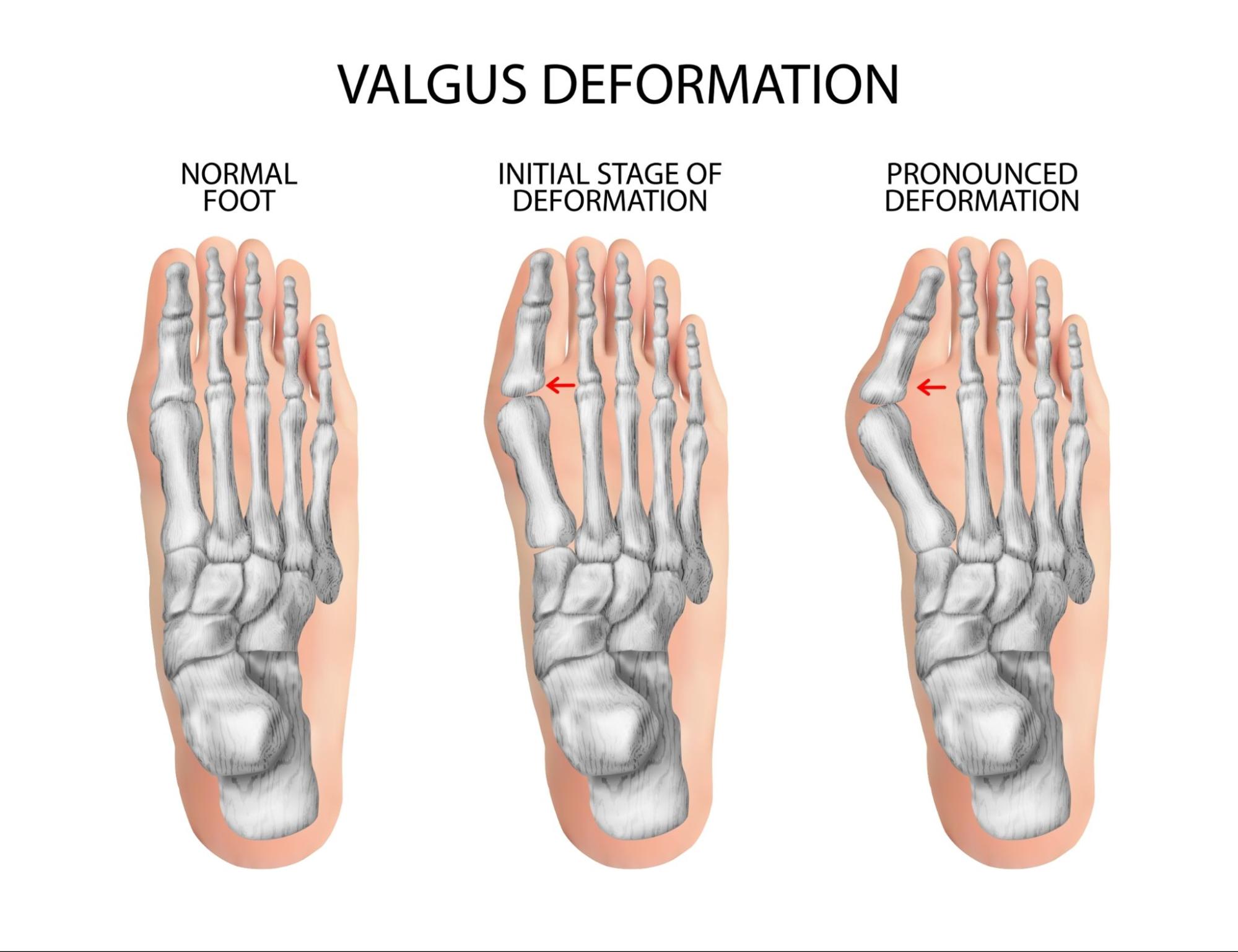
Bunions cause a progressive foot deformity, leading many to consider bunion surgery to improve aesthetics and their quality of life.
Symptoms of Bunions
Wondering if you have bunions? While a specialist can provide an accurate diagnosis, certain signs may indicate their presence, including:
- A bump or swollen protrusion at the base of the big toe
- Pain, tenderness, or discomfort that becomes worse when wearing tight footwear or standing for a long period of time
- Inflammation (swelling and redness) around the bump
- Limited mobility and stiffness when bending the big toe
- Calluses or corns due to friction between misaligned toes and shoes
- Changes in foot alignment, where the big toe may gradually shift inward and crowd the other toes
If you’re experiencing any of these symptoms, early intervention can help manage discomfort and prevent worsening.
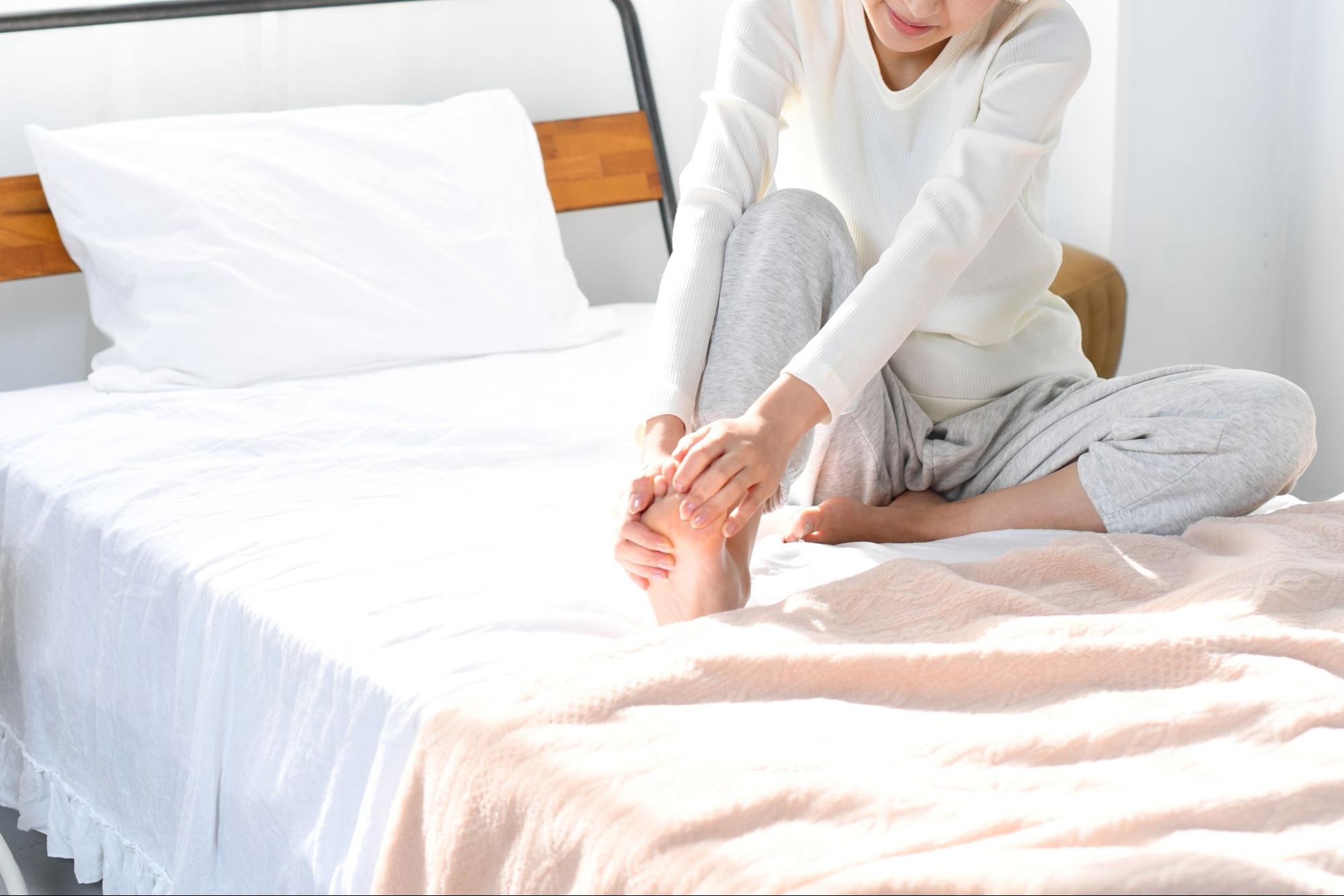
Bunions often cause pain, discomfort, swelling, and mobility issues, requiring bunion surgery to correct these issues.
Non-Surgical Treatment for Bunions
While bunions cannot be reversed without surgery, non-surgical treatments can help manage symptoms, slow progression, and improve comfort. These approaches are usually beneficial for mild to moderate cases or for those looking to delay surgical intervention. Common non-surgical treatment options include:
- Wearing proper footwear: Wearing wider and comfortable shoes with ample toe space and good arch support can reduce pressure on the bunion.
- Orthotic devices: Custom shoe inserts can improve foot alignment and distribute weight more evenly.
- Pain management: Ice packs, anti-inflammatory medications, and pain relief creams may be recommended by your doctor to alleviate discomfort.
- Physical therapy: Strengthening and stretching exercises for foot and toe muscles can reduce stiffness and discomfort.
- Toe spacers: Devices that help maintain proper toe alignment and prevent the bunion from worsening.
Understanding Bunion Surgery
Bunion surgery aims to correct the deformity in the foot, alleviate pain, and improve foot mobility. When treatments such as orthotics and pain management are not enough to provide relief, or the bunion has become severe, bunion surgery may be necessary to correct deformity in the foot, alleviate pain, and improve foot mobility.
There are two main surgical options for bunion surgery – minimally invasive surgery and traditional open surgery. Each approach has its advantages, and the choice depends on factors such as bunion severity, overall health, and recovery preferences. Let’s take a look at both options:
- Minimally invasive surgery: Involves making small incisions to realign the bones, resulting in faster healing times, reduced post-surgical pain, and minimal scarring. This procedure is typically performed under sedation, allowing for a quicker recovery [3] and lower risk of complications. This option is ideal for patients who are seeking a less invasive solution with minimal downtime.
- Traditional open surgery: Requires a larger incision to fully access and realign the bones. This method is often recommended for severe bunions or cases where significant correction is needed. While the recovery period is longer and scarring is more noticeable, open surgery is more effective for complex cases that require extensive realignment. Patients opting for this approach should be prepared for a lengthier healing process but can expect a more comprehensive correction of the bunion.
Ultimately, the choice between minimally invasive and traditional open surgery should be made in consultation with a specialist, who will consider factors such as pain levels, bunion severity, lifestyle needs, and long-term outcomes.
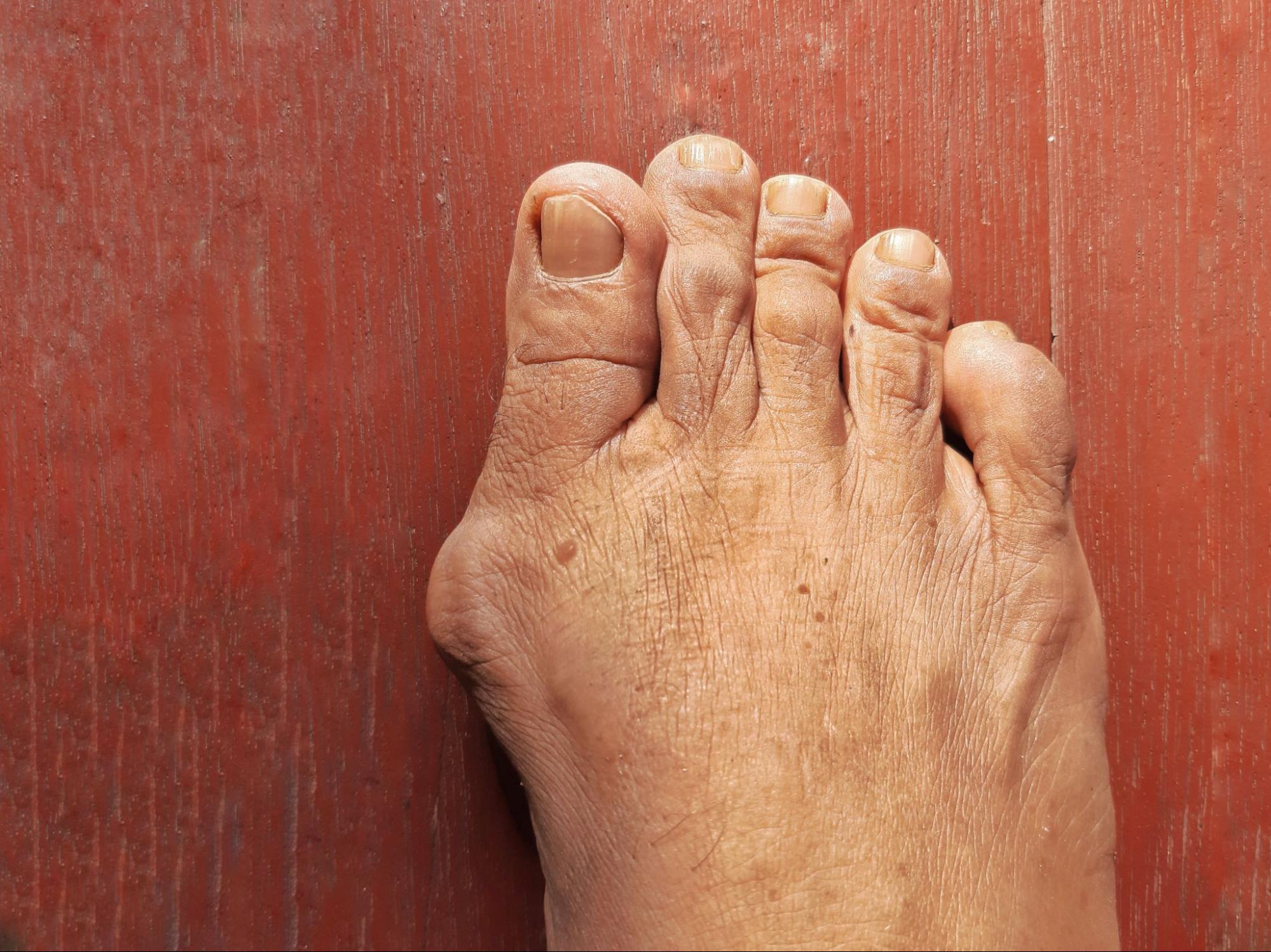
Left untreated, bunions can become worse over time, crowding other toes and impacting foot function.
Benefits of Bunion Surgery
There are numerous benefits of bunion surgery, including:
- Pain relief: Bunion surgery eliminates pain, swelling, and discomfort associated with bunions, improving quality of life.
- Aesthetics: Bunion surgery corrects the foot deformity, enhancing foot alignment and improving the aesthetics of the feet.
- Improved foot mobility: With surgery, foot mobility is restored [4], allowing for better toe movement and foot function.
- Prevention of complications: Bunion surgery can prevent further complications such as hammer toes, corns, calluses, or arthritis in the affected joint.
Cost of Bunion Surgery in Singapore
The cost of bunion surgery in Singapore would be dependent on several factors. This includes complexity of surgery, surgeon’s expertise, hospital stay, ward/bed type, equipment, and more. Following your evaluation, the clinical team will further advise you on the recommended treatment approach and associated costs. Financial counselling can also be provided to help you better understand your options and make informed decisions.
In terms of insurance coverage, some health insurance plans may cover bunion surgery if it is deemed medically necessary rather than purely cosmetic. Patients should check with their insurers to understand their specific coverage so they can make informed decisions about their treatment options and financial planning.
Post-Surgery Recovery
The recovery process for minimally invasive bunion surgery is generally faster and less painful compared to traditional open surgery, thanks to smaller incisions and reduced trauma to surrounding tissues. Recovery after bunion surgery also varies, depending on the type of procedure performed, individual circumstances, and adherence to post-surgical care instructions. However, complete recovery, including regaining full mobility and strength, may take several months regardless of the procedure.
Immediate Post-Surgery (Day 1–Week 1)
- Pain and Swelling Management: Expect mild to moderate discomfort, swelling, and bruising around the surgical site. Pain is usually well-controlled with prescribed medications (e.g., NSAIDs, painkillers) and tends to be less severe than with open surgery due to minimal tissue disruption.
- Weight-Bearing: Partial weight-bearing in a specialised post-operative shoe with crutches for the first few days.
- Dressing Care: The foot is typically bandaged, and small incisions (often 2–3 mm) may have stitches or adhesive strips. You’ll need to keep the dressing dry and intact, often until a follow-up visit within 5–7 days.
Early Recovery (Weeks 1–2)
- Mobility: You’ll likely wear the post-op shoe full-time to stabilise the foot and protect the surgical site. Walking is encouraged to promote circulation, but activities should be limited to short distances.
- Swelling Reduction: Elevation and ice help reduce swelling, which peaks around days 3–5 and starts subsiding thereafter.
- Follow-Up: A visit to the surgeon typically occurs within this period to remove dressings, check healing, and possibly take X-rays to confirm bone alignment.
Mid-Recovery (Weeks 3–6)
- Transition to Normal Shoes: Around 3–6 weeks, many patients switch from the post-op shoe to a wide, supportive shoe (e.g., a sneaker), depending on healing progress and surgeon guidance.
- Physical Activity: Light activities (e.g., walking for exercise) may resume, but high-impact activities (running, jumping) are discouraged. Physical therapy may be recommended to restore range of motion and strength.
Full Recovery (6 Weeks–6 Months)
- Return to Normalcy: By 6–12 weeks, most patients resume daily activities without restrictions, though swelling may linger slightly with prolonged standing. Full return to sports or strenuous activity might take 3–6 months, depending on the extent of the bunion correction and individual healing.
- Final Results: The foot’s appearance and function improve as swelling fully resolves, typically by 3–6 months. Scarring is minimal due to the small incisions.
Factors Influencing Recovery
- Technique: Variations in minimally invasive methods (e.g., use of screws, pins, or no fixation) affect recovery timelines. Your surgeon’s approach matters.
- Patient Health: Age, bone density, and conditions like diabetes or smoking can slow healing.
- Compliance: Following post-op instructions – keeping weight-bearing within limits, wearing the right footwear, and attending follow-ups speeds recovery.
How to Choose the Right Surgeon for Bunion Surgery in Singapore
Selecting the right surgeon for bunion surgery is an important decision that can significantly impact the success of the procedure, recovery time, and long-term foot health.
A highly experienced surgeon with a strong track record in bunion procedures is crucial. Look for a specialist who has performed numerous bunion surgeries and stays updated with the latest techniques in foot and ankle treatments. Also, consider consulting a specialist at a dedicated orthopaedic clinic as it typically offers a more personalised experience.
Dr. Sean Ng, Senior Consultant Orthopaedic Surgeon at Cove Orthopaedic Clinic in Singapore, is an experienced specialist in foot and ankle surgery in Singapore. With expertise in minimally invasive bunion surgery, Dr Ng provides patients with highly effective treatment tailored to their individual needs.
If you’re considering bunion surgery and want to explore minimally invasive options for quicker recovery and reduced discomfort, book a consultation today to discuss the best treatment plan for your condition.
Conclusion
Understanding the costs, benefits, and recovery process of bunion surgery helps individuals suffering from bunions make informed decisions. Living with bunions can significantly affect mobility and quality of life, and delaying treatment can worsen the issue. With bunion surgery, you can correct the deformity of the foot caused by bunions, eliminate pain and discomfort, and restore foot function.
Frequently Asked Questions
How do I know if I need bunion surgery?
In general, bunion surgery is recommended when other treatment methods such as pain management do not provide relief, or the bunion has become severe and affects foot function. However, only a specialist can provide the best advice on whether or not you should have bunion surgery.
Do bunions come back after bunion surgery?
Normally, bunions do not come back after surgery, but in rare instances your bunion may resurface due to several reasons. Contact your surgeon if you suspect your bunions are coming back.
Do bunions get worse with age?
Yes, without the right treatment, bunions can get worse over time as you get older, leading to severe foot misalignment and deformities.
Can you push a bunion back in?
No, you cannot push a bunion back in as it cannot be reversed once it has developed. However, bunion surgery can correct the issue.
References
- Kuhn J, Alvi F. Hallux Valgus. [Updated 2023 Aug 28]. In: StatPearls [Internet]. Treasure Island (FL): StatPearls Publishing; 2025 Jan-. Available from: https://www.ncbi.nlm.nih.gov/books/NBK553092/
- Cleveland Clinic. (n.d.). Bunions (Hallux Valgus). Retrieved from: https://my.clevelandclinic.org/health/diseases/14386-bunions-hallux-valgus
- Ji, L., Wang, K., Ding, S., Sun, C., Sun, S., & Zhang, M. (2022). Minimally Invasive vs. Open Surgery for Hallux Valgus: A Meta-Analysis. Frontiers in surgery, 9, 843410. Retrieved from: https://doi.org/10.3389/fsurg.2022.843410
- American College of Foot and Ankle Surgeons. (n.d.). Advances in bunion surgery lead to faster, less painful recovery. Retrieved from: https://www.foothealthfacts.org/article/advances-in-bunion-surgery-lead-to-faster%2C-less-pa
- Johns Hopkins Medicine. (n.d.). Bunion surgery. Retrieved from: https://www.hopkinsmedicine.org/health/treatment-tests-and-therapies/bunion-surgery





